- I've lived in Bangkok, Thailand, off and on for over 10 years. I know it can be tough to navigate.
- Here's my list of the best transportation options for getting to and around the city.
- Visit Insider's hub for travel guides, tips, and recommendations.
I've been hopping around Bangkok since 2010 and can attest that it's not the most straightforward metropolis to get around.
Bangkok's transport infrastructure is extensive, and the traffic is notoriously bad, so having a good understanding of the different options and how they work is key to making the most of your time so you don't spend most of it stuck in congestion.
Here is everything you need to know about navigating Bangkok quickly and affordably.
Getting to Bangkok
You'll likely be flying into Thailand through Bangkok's international Suvarnabhumi Airport. As the main gateway to Thailand and Southeast Asia, it's one of the world's busiest airports.
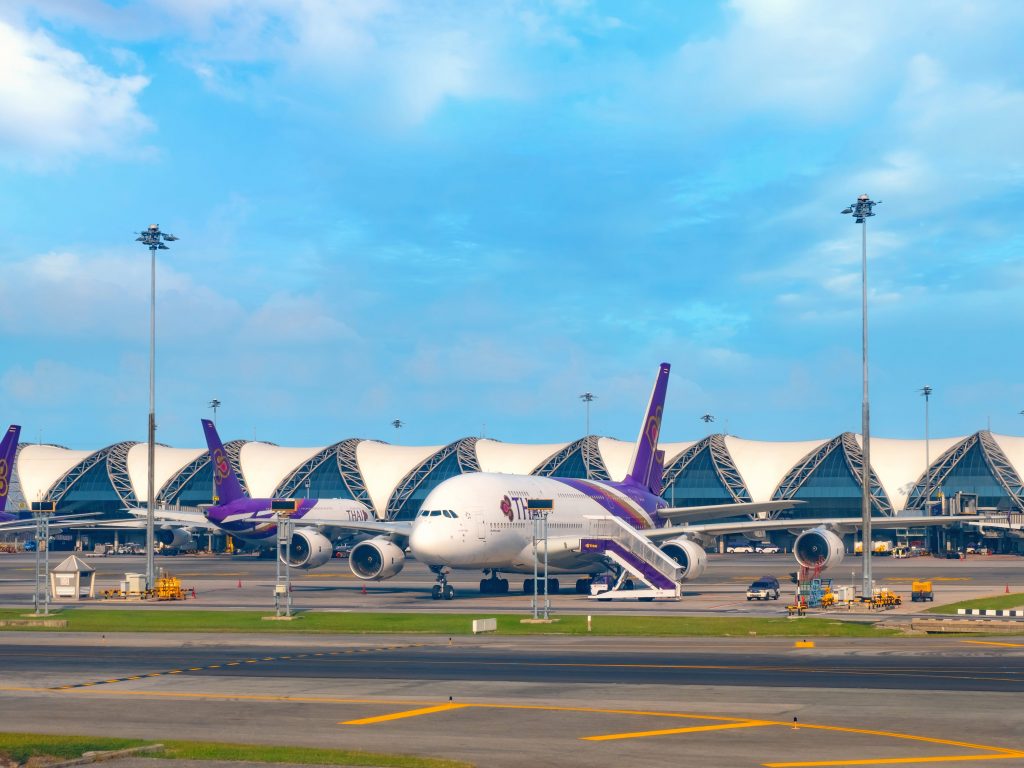
Suvarnabhumi Airport
Suvarnabhumi Airport services upwards of 90 different airlines. It is a major transport hub for Asia, connecting to all the other Southeast Asian countries such as Vietnam and Cambodia, which are usually serviced from here by smaller regional airlines, and across Asia with routes from India, Japan, South Korea, and China.
There are currently no direct flights from North America to Bangkok (the route to Suvarnabhumi will take you through Doha or Dubai with Qatar Airways and Emirates Airlines respectively). There are some direct flights from Europe though, through cities such as London, Paris, and Frankfurt.
Once you get to Suvarnabhumi, the airport has a lot to make you feel at ease like free Wi-Fi, a pretty good Thai food court, lots of international dining options, and even a massage spot.
If you are just spending a few hours or a day in Bangkok, you might want to consider checking out the luggage storage stand on the basement level. You can store each bag here for 100 baht per day.
To get from the airport into the city, there are a couple of options. The Airport Rail Link on the basement level is the only form of efficient public transport from the airport into the city. It costs 45 baht and takes about one hour to the downtown Ratchaprarop or Makkasan stations connecting to the main BTS Skytrain and MRT underground networks respectively.
Otherwise, you need to take a taxi from the ground-floor taxi stand. It's essentially the only other transport option from Suvarnabhumi to greater Bangkok, since rideshares are not allowed to do airport pickups.
Staff at the taxi stand speak English and print a slip with your desired destination address on it for the driver. The price runs on a meter costing around 350 baht ($10) to the city center, plus about 150 baht ($4) in surcharges for the taxi stand and expressways. Since the pandemic, there are also extra surcharges for large pieces of luggage too.
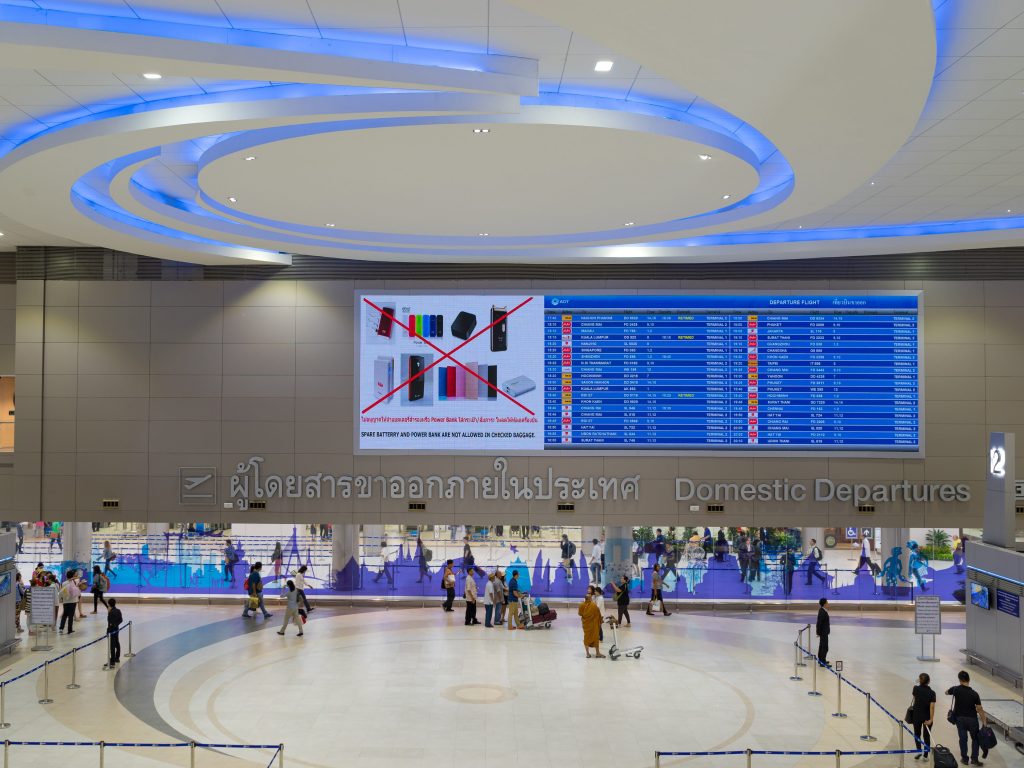
Don Mueang Airport
Don Mueang is Bangkok's secondary international airport. If you are flying into Thailand from the US or elsewhere, chances are you will be coming in through Suvarnabhumi, but if you are flying in from Southeast Asia or Thailand, you'll probably land at Don Mueang.
There aren't very good public transport options to and from this airport, so you'll need a taxi. This can take up to an hour into the city, depending on traffic.
Getting around Bangkok
Bangkok experiences intense gridlock, and public transport can be helpful in this regard. During certain times, like heavy rains and rush hour, long main roads like Sukhumvit and Silom can be congested for hours, in my experience.
A fair amount of walking may be necessary from inter-city train stops depending on where you need to go. That's tough when it's hot out, so taxis and motorsai (motorbike taxis) will come in handy, as will familiarizing yourself with water transport for exploring older parts of town.
Here are your best transport options for navigating the capital.
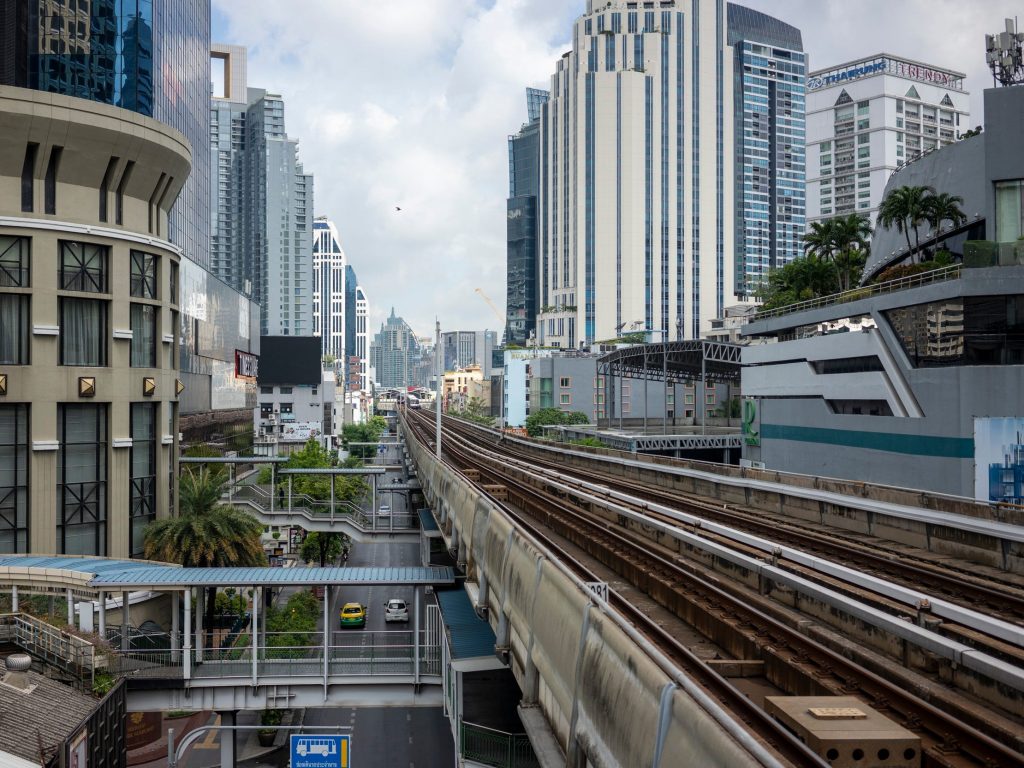
BTS Skytrain
Bangkok's BTS Skytrain system is the city's main public transport vein. It connects to all other transport systems (MRT underground, Chao Phraya Express Boat, and Airport Rail Link) and is essential for exploring busy downtown areas with its Sukhumvit and Silom lines.
Ticket costs range from 16 up to 59 baht ($0.50 to $1.75) depending on how many stations you are traveling to. Buying a reloadable Rabbit transport card (and returning it when you're finished) is recommended if you plan on using the Skytrain ad MRT a lot. This will save you from buying single tickets for each journey (ticket machines can get very queued up during busy times). You reload it by approaching the ticket-seller booth situated at station exits.
MRT
You might also use the main Blue Line of Bangkok's underground MRT system. The MRT is frequented by local commuters more than the BTS Skytrain, as it connects to a broader spectrum of the city beyond the main downtown areas. It does have a couple of stops in Sukhumvit and Silom too though. It's always best to check on Google Maps whether the BTS or MRT will be the closest walking distance from where you want to go.
The airport link connects to the MRT at the Makkasan/Sukhumvit station and connects to the BTS Skytrain at the Sala Daeng/Silom, Sukhumvit/Asoke stations, and Mo Chit/Chatuchak stations. It also services Bangkok's railway station, Hua Lamphong, where you may depart or arrive to and from other parts of Thailand. The MRT uses a separate reloadable card system than the Skytrain.
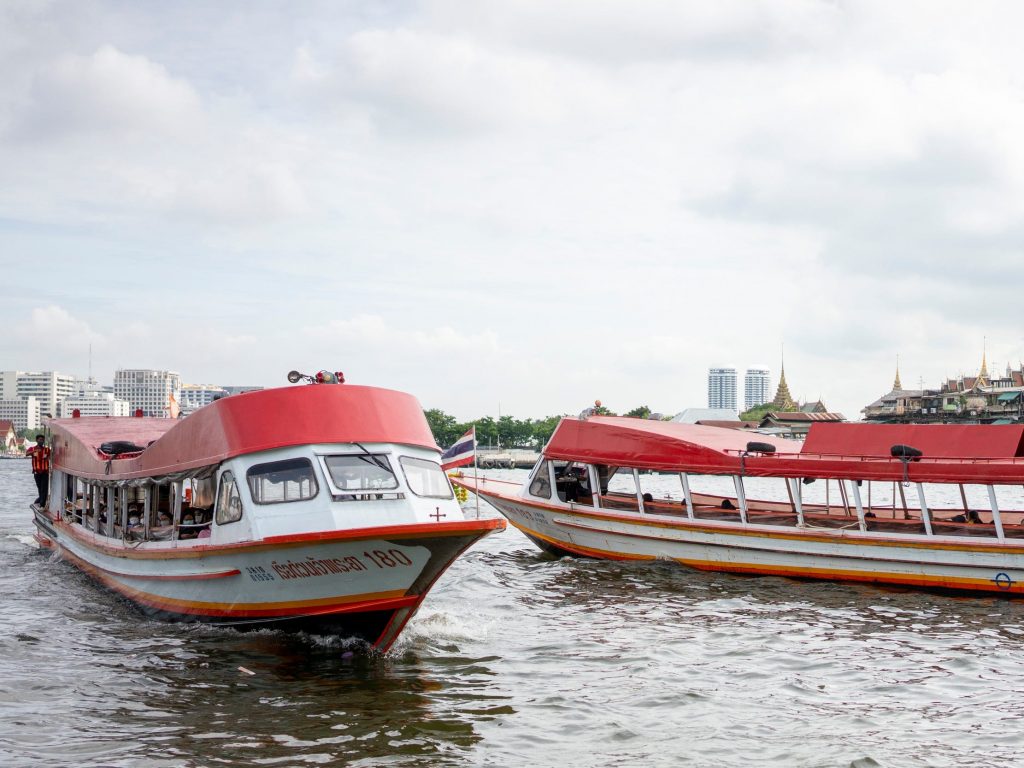
Chao Phraya express boat
The Chao Phraya River runs through Bangkok, making the Chao Phraya Express Boat reachable via the BTS Skytrain stop, Saphan Taksin, a major means of getting around. It particularly is great for linking to Bangkok's older, historic areas and eases rush-hour traffic on roads. For travelers, it also offers sightseeing, too.
Fares, which range from 15 to 32 baht ($0.45 to $1), can be paid at the pier kiosks or on the boat. The Chao Phraya Tourist Boat with the blue flag cost 60 baht ($1.75) one-way (or 200 baht, or $5.86, for unlimited rides) and will let you hop on and hop off at piers located conveniently at important historical and cultural attractions such as the Grand Palace, Khao San Road, the flower market, and the temples Wat Phra Kaew, Wat Pho, and Wat Arun, as well as the ICONSIAM shopping mall.
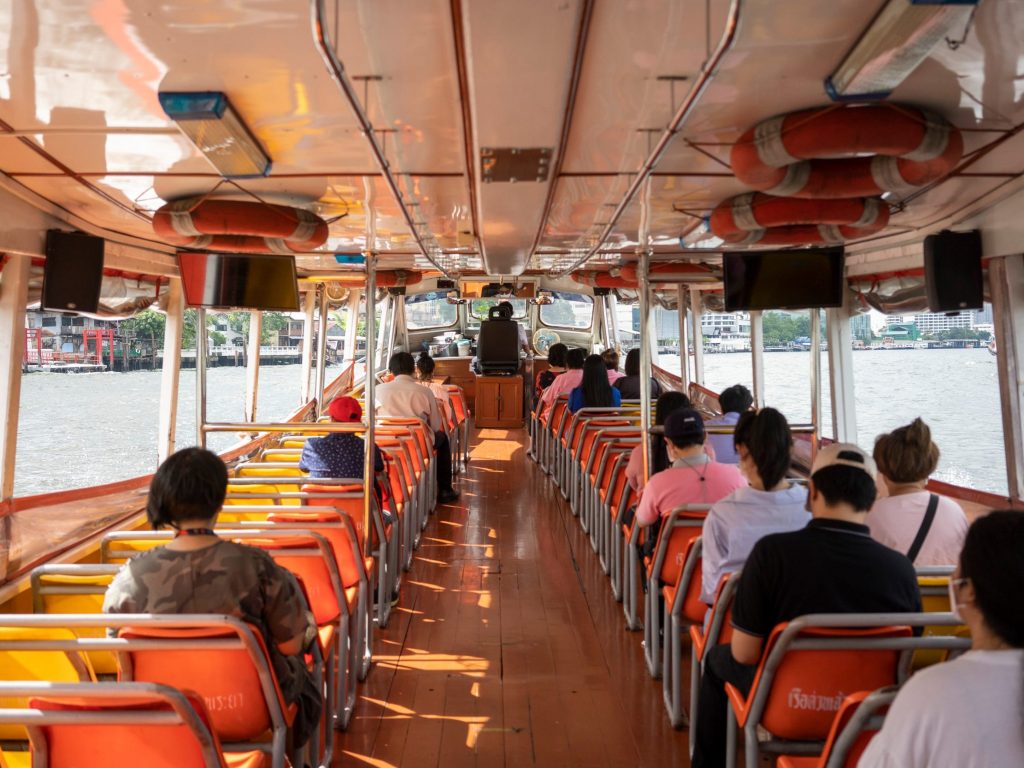
Khlong canal boat
The Khlong Saen Saep water bus is a set of big rickety wooden boats that travel the Khlong canal, a body of water separate from the main river, Chao Phraya. Used by local commuters to connect from residential areas to the inner city, it makes similar stops as the Skytrain does downtown (for example, to the CentralWorld and MBK malls), it's a transport option you won't take for convenience but for an adventure, since it's totally unique to Bangkok.
These boats arrive at stations every few minutes and only stop if you wave them over. At lightning speed, the boat workers jump out and tie the boat to the pier, and you jump right in. A boat worker daringly walks along the edges ticketing passengers (8 to 20 baht depending upon distance).
When buying your ticket, say which stop you want to get off at. It'll be your job to watch the names on the piers as they pass by, stand up to signal you'll be getting off, and jump right back out again.
Grab rideshare app
In recent years, the ride-hailing app Grab has become a convenient way to book taxi and motorbike rides. These days, it tends to even be more affordable and transparently priced than hailing taxis and motorbikes from off the street. While Uber and Lyft do not operate in Thailand, Bolt has also launched a Bangkok service, although Grab is more readily available.
The Grab app allows for payments by either cash or credit card, while Bolt only allows cash.
View Insider's comprehensive guide to visiting Bangkok, Thailand.
